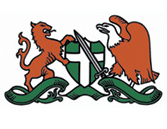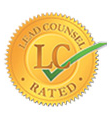Like other road users in California, pedestrians have both rights and responsibilities. Drivers must give way to pedestrians in the marked and unmarked crosswalks at intersections. However, pedestrians cannot suddenly step into the roadway in front of a vehicle that cannot reasonably stop in time. Although pedestrians usually have the right-of-way, their actions may affect liability in the event of an accident. Recent updates, like the Freedom to Walk Act (AB 2147, 2022), legalized safe mid-block crossings when there is no immediate danger of a collision. Ultimately, pedestrians and drivers must exercise due care to ensure safety on the road.
Pedestrian Rights at Crosswalks
The strongest legal protection for pedestrians lies in crosswalks. The law underlying this right is the California Vehicle Code (CVC) 21950, which clearly states that a pedestrian in any marked or unmarked crosswalk at an intersection has the right-of-way, and drivers must yield. This law places a substantial and explicit duty of care on drivers to protect pedestrians.
A common myth is that legal protection applies only in crosswalks marked with painted white lines. However, California law offers identical civil protection to an unmarked crosswalk, legally defined as the part of a roadway that is an extension of the sidewalks at an intersection. This means the presence of a legal crosswalk, even with no painted lines, at almost every intersection. This is important because it gives pedestrians a legal right-of-way at thousands of intersections statewide. This legislation acknowledges that the safety of a pedestrian should not be conditional upon the presence of painted lines in the city.
The law does more than simply grant pedestrians the right-of-way. It puts a significant burden of responsibility on the driver. When approaching a crosswalk, a driver must slow down and, if necessary, stop to ensure the pedestrian can cross safely. Furthermore, a driver may not overtake another vehicle at a crosswalk where a pedestrian is crossing. This is a crucial rule to ensure that a second vehicle does not strike a pedestrian hidden from view by the stopped car. This law underscores the state’s priority of creating safe pedestrian zones, reinforcing that the burden to ensure reasonable care falls on the shoulders of the motorist.
Legal Protections on Sidewalks
Sidewalks offer protection to pedestrians, as they are a pedestrian-only zone. Drivers must also yield to pedestrians on sidewalks. Driving a vehicle across or onto pedestrians is illegal. Let us look at protections the law offers you, the pedestrian:
-
Pedestrian rights on sidewalks — These are designated pedestrian zones, legally separate from road traffic. The California vehicle code (CVC) 21952 states that a motorist must give the right-of-way to any pedestrian on the sidewalk when using or leaving a driveway or an alley.
-
Driver liability at driveways (CVC 21952) — When entering or exiting a driveway or alley, drivers must wait until the sidewalk is clear of pedestrians. This legislation clearly puts the onus on the driver to check that he/she has cleared the sidewalk before crossing it. The driver must wait until he/she can overtake pedestrians and avoid possible conflicts or accidents.
-
Prohibition of motor vehicles on sidewalks — CVC 21663 further reinforces the protected nature of sidewalks by prohibiting any person from driving a motor vehicle on a public sidewalk. This statute is an excellent deterrent to using sidewalks as a through way, a parking place, or a place to operate a car. Although some exceptions exist, including emergency vehicles, this law reinforces sidewalks as pedestrian-only spaces.
Protections Outside of Crosswalks or Sidewalks
Motorists are legally obligated to give way to pedestrians who cross a road beyond a crosswalk. This is often called "jaywalking," but it is important to understand the specific provisions.
-
The Pedestrian's Duty to Yield (CVC 21954)
California Vehicle Code (CVC) section 21954 requires that pedestrians who cross a roadway outside a marked or unmarked crosswalk at an intersection yield the right-of-way to vehicles. Even though decriminalization of safe jaywalking in California (Assembly Bill 2147) occurred, for example, if a pedestrian crosses in a manner likely to cause an immediate risk of collision with an oncoming automobile, it can be mentioned. This law still requires drivers to maintain their duty of care. This law leaves a burden on pedestrians to be careful and consider their safety when they are not on a crosswalk.
Although the criminal element of safe jaywalking was decriminalized, the necessity of pedestrians to yield, as stipulated by the CVC, is a significant consideration in determining liability in a pedestrian accident. This is because the law is still responsible for their safety when crossing outside designated crosswalks. The legal term “yield the right-of-way” means that the pedestrian should ensure that his/her path is clear before proceeding.
The law's continued emphasis on the duty of care of the driver creates a framework of shared responsibility, in which both parties must exercise caution. When a pedestrian violates CVC 21954 and is hit by a car, he/she can be partially responsible for the accident. This can seriously affect their capacity to claim compensation for their injuries under California’s pure comparative negligence system.
-
The Driver's Continuing Duty of Care
Even with a pedestrian's duty to yield, drivers are not absolved of responsibility. CVC 21954 states that this provision does not absolve the driver of a vehicle from the responsibility of exercising due care towards the safety of any pedestrian on a roadway. This is a fundamental legal concept. It is always a driver's responsibility to be attentive and exercise reasonable care to prevent a crash.
If a driver sees a pedestrian, including one who violates the law, and has a reasonable chance to slow down, stop, or take evasive measures to avoid an accident, he/she should do so. Even if a pedestrian is not in a crosswalk, he/she can bring an action against a driver who neglects to exercise this duty of care.
Enhanced Protections for Blind Pedestrians
California law also provides special and added protection to blind pedestrians. This legislation recognizes the special vulnerability of these pedestrians on the road. This protection is known as the White Cane Law.
Under vehicle code (CVC) 21963, a totally or partially blind pedestrian using a predominantly white cane (with or without a red tip) or guided by a dog may have the ultimate right-of-way. This law calls on motorists to consider the safety of these vulnerable road users.
Unlike other statutes regulating the rights of pedestrians, CVC 21963 mandates that a driver entirely stop when approaching a blind pedestrian holding a white cane or accompanied by a guide dog. Until the driver can see that the pedestrian has crossed the road and will not be hit by the vehicle, he/she should not move. This right-of-way is absolute, since blind persons require safety to cross without being run over by a motorist who has not correctly estimated his/her speed and route.
The legislative purpose of this strict law is to remove any uncertainty on fault in an incident and to place the full responsibility of the safety of a blind pedestrian on the driver. When a motorist fails to give this absolute right-of-way, it is negligence per se, or in other words, the driver is said to have breached his/her duty of care. This is an effective legal doctrine for an injured blind person because proving liability in a personal injury court case becomes easier through this legal doctrine.
In addition to civil penalties, a driver who contravenes this law could be convicted and face criminal penalties, including fines and license points. A driver may even be charged with a felony in the tragic event of an accident resulting in injury or loss of life. This effective legal safeguard makes people with impaired vision feel more confident and secure when navigating through the crowd in the street, as the law is designed to safeguard their autonomy on the streets.
This increased responsibility is independent of where the pedestrian is. Drivers must stop whether the blind pedestrian is in a crosswalk or trying to cross mid-block. Drivers should also exercise every possible caution to prevent an accident. This involves observing their surroundings and avoiding honking, which may disorient or frighten a blind pedestrian who relies on hearing for navigation.
California’s Pure Comparative Negligence Rule
Fault and compensation in cases of shared causality of an accident, as in the case between a driver and a pedestrian, are governed by the principle of pure comparative negligence. This provision enables an injured pedestrian to recover damages even if they are at fault.
The principle of comparative negligence is a concept of law that assigns responsibility between all the parties involved in an accident. When a car hits a pedestrian, it is not always a simple situation where one party is at fault. The driver could have been speeding, but the pedestrian was on their phone or not using a crosswalk. In these cases, the actions of both parties were at fault for the accident, and comparative negligence is applied to calculate the respective allocation of blame.
California is among those few states that adhere to the pure comparative negligence rule. This differs from modified comparative negligence rules in many other states. A pedestrian may also claim and secure compensation under the pure comparative negligence rule, even when he/she is determined to be more at fault than the driver. A pedestrian may even be found 99% at fault and recover damages for the remaining 1%.
The process works as follows:
-
A jury or claims adjuster determines the total value of the pedestrian damages and may include medical bills, lost wages, and pain and suffering.
-
The jury or claims adjuster then allocates a percentage of fault to each party. This would then be deducted by the pedestrian's fault percentage, leaving them with the remainder of their compensation.
For example, a pedestrian's damages are valued at $100,000. However, a jury determined he was 25% at fault for the accident because he was jaywalking. The pedestrian could still recover $75,000 from the driver. This ensures that a driver who was at least partially negligent cannot avoid responsibility simply because the pedestrian also erred.
What To Do After Being Hit By A Car
As a pedestrian involved in an incident with a car, what happens in the moments after the accident is critical to your health, safety, and any legal claims. You should consider doing the following:
-
Call 911 for Police and Medical Assistance
The very first and essential thing to do is to dial 911. Request for law enforcement and medical professionals. The police will create an official accident report, a vital document in your legal case.
Although you may not be injured, EMTs can examine you to rule out internal bleeding or head injury, which might not be readily noticeable. Do not refuse medical attention at the scene.
-
Obtain the Driver's Information
Assuming you are physically capable, ask the driver for the following information:
-
Full name, phone number, and home address
-
Driver's license number
-
Vehicle license plate
-
Name of insurance company and policy number
-
The vehicle make, model, and color — This is important regardless of how friendly or apologetic the driver appears.
-
Document the Scene with Photos and Videos
Use your smartphone to capture as many photos and videos as you can. Record a scene from different angles. It includes:
-
The location of the car and where you are on the sidewalk or the road
-
Damage to the vehicle
-
Your injuries
-
The immediate environment, like traffic lights, pedestrian crossings, and any other road signs, as required
-
Skid marks or debris on the road — This could be highly valuable in the future to prove negligence.
-
Obtain Witness Contact Information
Ask them to provide their full name and contact details if anyone witnessed the accident. The information given by the independent witness can give a fair report of what occurred, which may be very important in case the driver offers a different version of the events than yours.
-
Seek Medical Attention
You should visit a doctor as quickly as possible, even if paramedics observe you. There are some injuries, like whiplash or concussions, that do not show any symptoms within hours or even days. A medical professional can diagnose and document all your injuries appropriately. Medical documentation establishes a strong connection between the accident and your injuries, which any legal claim requires.
-
Do Not Give a Recorded Statement
The other driver's insurance company can approach you after the accident and record a statement. You should not provide one without first consulting an attorney. Insurance adjusters have been trained to pose questions that will make you say something that can be used against you to downplay your claim. It is best to decline and leave all communication with the insurance company to a lawyer.
Types of Compensation (Damages) You Can Recover
After a pedestrian accident, the financial compensation you may be entitled to is legally known as "damages." These damages can be separated into two main categories: economic and non-economic. The distinction between these is crucial for building a strong case.
-
Economic Damages (Tangible Losses)
Economic damages are the most straightforward to calculate, as they are measurable, out-of-pocket expenses caused directly by the accident. These physical losses can be established through bills, receipts, and other financial documents. They include:
-
Medical bills — This is usually the highest element of economic damages. It covers all expenses of your injuries, including the initial emergency room visit and ambulance ride to the hospital, surgeries, prescription drugs, and continued treatment, such as physical therapy, rehabilitation, and further medical treatments.
-
Lost wages and lost earning capacity — In case of your absence due to injuries, you will get paid what you lost in terms of wages. When the injuries are severe or permanent, you may also be compensated based on lost earning capacity. The difference between what you would have earned over your lifetime before the accident and what you are presently capable of earning because of a long-term illness or inability to work in your former occupation.
-
Non-Economic Damages (Intangible Losses)
Non-economic damages aim to compensate you for the intangible, subjective effects of the accident. These losses do not come with a bill, but profoundly impact your life. They include:
-
Pain and suffering — This general category encompasses the physical pains that you went through at the time of the accident and during your recovery. It is also accompanied by chronic pain that can be permanent or long-lasting.
-
Emotional distress — The psychological and emotional impact of a pedestrian accident can be extreme. This includes compensation for emotional distress, anxiety, fear, depression, and post-traumatic stress disorder (PTSD) that you are likely to suffer due to the trauma.
-
Loss of enjoyment of life — When you cannot engage in things you previously enjoyed, including hobbies, sports, spending time with friends and family. This is known as your loss of enjoyment of life. Compensation for this is meant to appreciate the reduced quality of life induced by the accident.
California has no cap on non-economic damages, meaning that compensation for serious, life-changing injuries may exceed medical bills and lost wages.
Find a Personal Injury Lawyer Near Me
Navigating California's pedestrian laws can be complex, but remember, you are not powerless. The law can offer you a means of guarding your rights, from the shelter of the sidewalk to the doctrine of pure comparative negligence. Knowing these protections is the first step toward safeguarding yourself on the road.
If you or a loved one has been injured in a pedestrian accident, you can determine your fair compensation rights and hold the negligent party responsible. An attorney will help you navigate all these. Contact the Los Angeles Car Accident Attorney today at 424-237-3600 to schedule a free consultation and learn more about your case.






